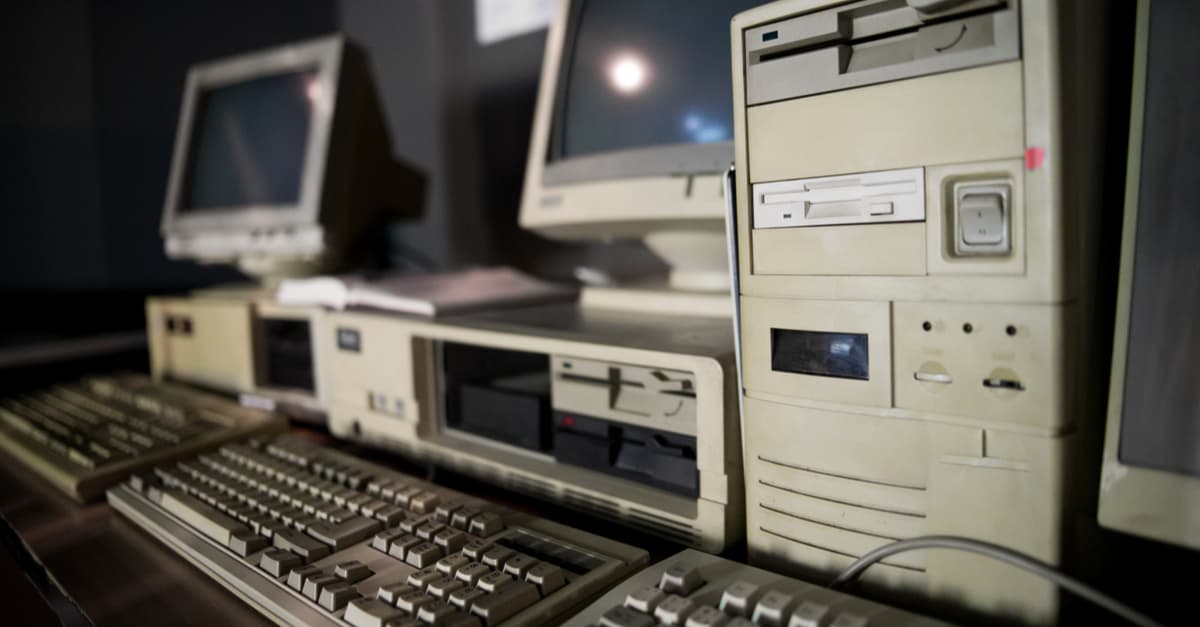What even is a forgotten home computer? When we gaze back at the annals of computing history, there are some definite standouts. The two major players in the room that set the stage for things to come would have to be the IBM PC-XT and Apple’s Macintosh. That set the stage for the modern era, with OEM MS-DOS and MacOS serving as primordial versions of today’s operating systems.
That isn’t the whole story though, so let’s look at some forgotten home computers that left a major impact on the computing landscape.
Democratizing Computers: The Sinclair ZX81
For our UK and European readers, this isn’t anywhere close to a forgotten home computer. However, when we consider other major markets, the Sinclair ZX81 just didn’t make a global splash. Sold in a kit retailing for the equivalent of $520 when adjusting for inflation, the ZX81 was what we consider the first affordable computer.
Much like its competitors, the Commodore 64 and Amstrad CPC-464, you were limited to slow load times and the use of BASIC as the primary programming language. However, this served as a foundation for so much development in both applications and games alike.
Numerous software studios in Europe owe their success to the early days of the microcomputer, and ZX81 allowed any kid who saved up their allowance the means to take part in the digital revolution.
Radioshack’s Killer App: The Tandy TRS-80
If you’re over the age of 30, you likely remember Radioshack. The electronics hub du jour, Radioshack was full of kits for the budding electrical engineer and tinkerer. While I generally built DIY AC adapters with the components sold there, there is one forgotten home computer that stands out.
The Tandy TRS-80 was introduced originally in 1977 but had staying power. Much like the aforementioned ZX81, the TRS-80 shared the same microprocessor at its core. It was an affordable way for kids of the late 70s and early 1980s to get into computing.
Small businesses came to embrace the TRS-80. However, that wasn’t enough to save it from the launch of the Apple Macintosh and PC compatibles championed by IBM’s technological prowess.
Commodore Takes the Stage: The Amiga 500
If you’re into digital art, video editing, or electronic music, few forgotten home computers are as revered as the Amiga 500. Commodore had set the world on fire with the Commodore 64, one of the most popular microcomputers of the 1980s. However, the Amiga 500 was more of everything.
Cost and availability were major setbacks in the United States. The Amiga was simply more popular in Europe, as we’ve seen with the ZX81. For its time, the Amiga 500 was one of the most advanced PCs on the market. Still, it ended up in studios, development houses, and so much more. However, if you were the average American teen, it is just another of the forgotten home computers that made it to market.
Japan’s PC Revolution: The MSX
I’ve always had a fascination with this forgotten home computer. The Japanese MSX is something steeped in a mystique all its own, much like its successors the FM Towns, Sharp X68000, and PC-98. Spearheaded by Microsoft and ASCII, this was a PC that wasn’t truly a PC. It ran MS-DOS and could use MS-BASIC, but it wasn’t capable of running IBM PC programs.
It set Asia on fire in the 1980s, being the home computer to get in its day. However, its limited introduction in the United States means it has been relegated to the sands of time. Still, you can’t help but wonder how things would’ve fared with a more extensive rollout of these promising machines.
Echoes Through Time
You can point through any era and see forgotten home computers. Apple’s Lisa is one notable failure, as a general example. Much like storage formats and media formats of yesteryear, it is fascinating to see what was being tossed around and what stuck. The computing landscape could’ve been different, provided the right pieces were in place for some of the machines covered today.
The image featured at the top of this post is ©Salivanchuk Semen/Shutterstock.com.

